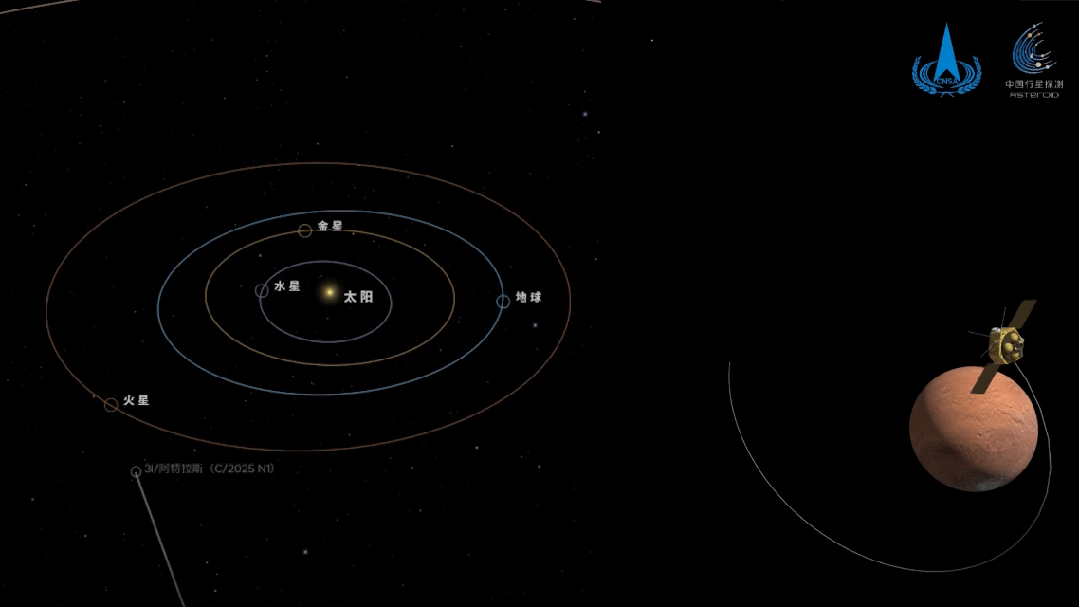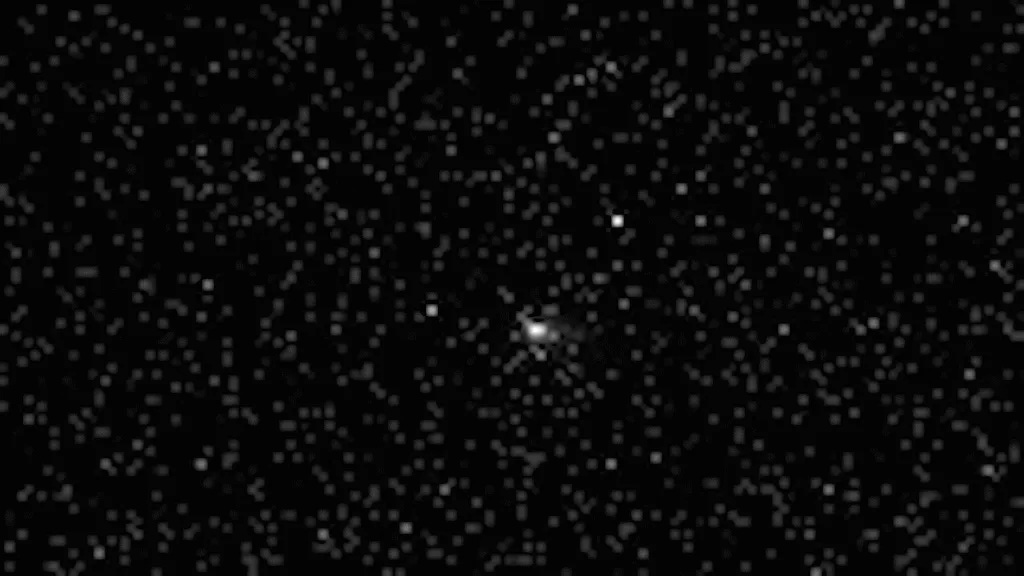Tianwen-1 Mars Orbiter Performs Closest Observation of Interstellar Comet
3I/ATLAS, the third interstellar object ever found, has had close observations performed by China’s Mars spacecraft,
The following is an unofficial translation of a post shared on November 6th by the China National Space Administration via its WeChat channel, detailing observations of 3I/ATLAS. Any errors present are my own, if you find any problems with this translation please reach out and correct me. Additional information is provided via footnotes.
Recently, the Tianwen-1 orbiter successfully observed the interstellar object 3I/ATLAS using its high-resolution camera. During the observation, the Tianwen-1 orbiter was approximately thirty million kilometers from the target object, making it one of the closest probes to observe this object to date.
Data acquired by the high-resolution camera1, after being received and processed by the ground application system, shows that the object displays obvious comet characteristics in the images, composed of a nucleus and surrounding coma, with a diameter reaching several thousand kilometers. Researchers created an animation using a series of images taken over thirty consecutive seconds that vividly demonstrates the object’s trajectory. Through this observational data, researchers are conducting further in-depth studies of 3I/ATLAS.

The successful observation of 3I/ATLAS represents an important extended mission for Tianwen-1. Using the probe to observe faint objects serves as a technical trial for Tianwen-2’s asteroid exploration mission2 and has accumulated valuable experience.
3I/ATLAS was discovered on July 1, 2025, by a survey telescope located in Chile3. It is the third known interstellar object to visit the solar system4, traversing it along a hyperbolic trajectory5. The object likely formed around ancient stars in the galactic center and is estimated to be approximately three to eleven billion years old, potentially older than the solar system itself. It represents a rare sample for detecting the composition, evolution, and early stellar history of extrasolar systems, holding significant scientific importance.
The Tianwen-1 team began preparing for 3I/ATLAS observations in early September. Due to the enormous observation distance (approximately thirty million kilometers), the object’s high intrinsic velocity (about 58 kilometers per second), even faster relative velocity to the Tianwen-1 orbiter (around 86 kilometers per second), small target size (nucleus diameter approximately 5.6 kilometers), and extremely faint brightness when observed from Mars orbit (currently not observable from Earth), the imaging difficulty was extreme. This placed very high demands on the Mars orbiter’s attitude pointing control capabilities and imaging strategy.
The optical payload carried by the Tianwen-1 orbiter was originally designed to photograph the bright Martian surface6. This was the first attempt to photograph such a distant and relatively dim target (ten thousand to one hundred thousand times fainter than Martian surface targets). Through collaborative efforts by the Tianwen-1 team, combined with 3I/ATLAS’ orbital characteristics, brightness features, geometric dimensions, and the orbiter’s scientific payload technical capabilities, along with repeated simulation calculations and scenario modeling, they completed a feasibility assessment of the observation mission. They determined to use the high-resolution camera carried on the Tianwen-1 orbiter, carefully designed key imaging strategies, and ultimately successfully completed the observation. For this observation of such a faint detection target, the high-resolution camera’s capabilities were pushed to their limits.
The Tianwen-1 probe entered Mars orbit in February 20217 and has been operating stably for 4 years and 8 months to date, remaining in good condition.
Designated High Resolution Imaging Camera (HiRIC) is a Time-Delay Integration Charge-Coupled Device camera (hardware images here) operating in a linear sweep mode to obtain high-resolution full-color and spectral optical images. Spectral imaging bands available are:
Panchromatic: 0.45–0.9 um
color: blue 0.45–0.52 um, green 0.52–0.60 um, red 0.63–0.69 um, near-infrared 0.76–0.90 um
The Tianwen-2 mission, launched in May 2025, is currently en route to asteroid 2016HO3/469219 Kamoʻoalewa, where it will collect samples in 2026 and 2027 before delivering them to Earth in 2029.
3I/ATLAS was spotted by the NASA-funded Asteroid Terrestrial-impact Last Alert System survey telescope in Rio Hurtado, Chile, with initial observations dating back to June 14th 2025.
After 1I/ʻOumuamua, discovered in October 2017, and 2I/Borisov, found in August 2019.
It is passing through our solar system while just barely beneath the orbit of Mars, relative to its distance from the Sun.
It was to search for a suitable landing location for the Zhurong Mars rover, attached atop of the orbiter before being sent to the surface.
After a launch atop of a Long March 5 from the Wenchang Space Launch Site on July 23rd 2020.





Nice article and always enjoy your posts.
With so much activity it hard to track all the launches, engine tests, sat missions, manned missions no plans etc… Heady days for space exploration!
BTB My new sim/game about managing a space program is up on Kickstarter. Called LIFTOFF! 2.0 The orginal is still used in command war colleges and schools as crises resource technology managment sim with open sand-box mission architecture.